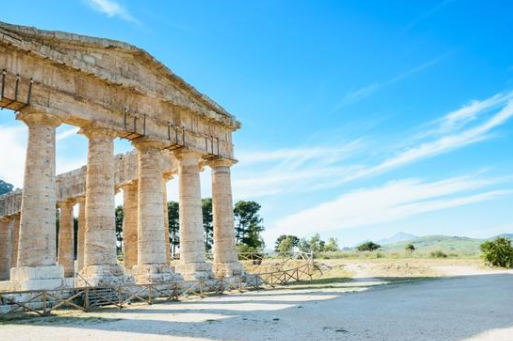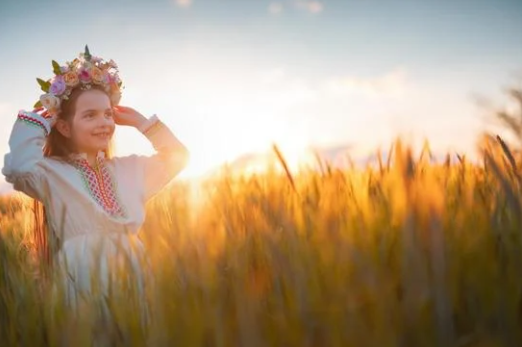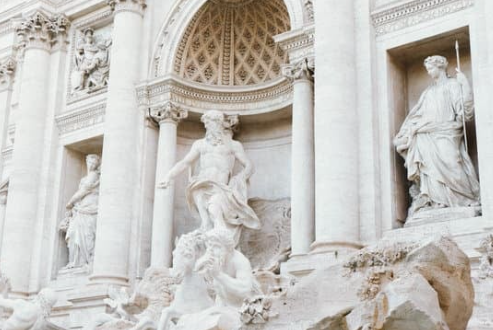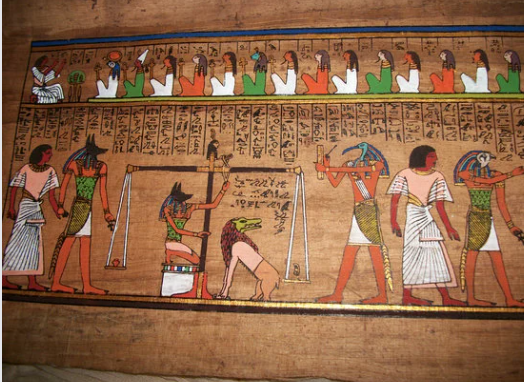Looking back on world history, it becomes evident that many cultures spread throughout the world praised and worshipped differing deities in various forms; however, some of these gods and goddesses share similarities and others are astute representations of the beauty of Spring. Regardless of which are most well-known or even who appears in pop culture references today, it is crucial to appreciate the existence of Spring Deities across all cultures and historical origins.

One of the most prominent foretellers of spring symbolism and the deities that control it lies in Celtic mythology.
Here, the goddess Artio embodies the cycle of hibernation and her re-emergence from a long, restful break is accompanied by the arrival of Spring. Artio is also viewed as the patron of bears, which are regarded as symbols of strength and endurance. She is ultimately seen as a sign of growth after dormancy.
Another goddess, Blodewedd, whose name translates to “flower face,” is seen as a tribute to springtime beauty and grace in the face of blooming flowers. She was made to represent the various colors of vitality in the natural world. However, her story gives way to darkness, as she is transformed into a symbol of death and wisdom, an owl, after being unfaithful to her husband, who was the human son of two Celtic gods. She henceforth embodied the cycle of life and death.
Another major springtime figure in Celtic history is Brigid, the goddess of various aspects, including fire, poetry, medicine, and the end of winter. A celebration is held in dedication to her each year to mark the beginnings of Spring; this is known as Imbolc. Here, she is acknowledged for her resemblance to the fertility, the warmth of the hearth, and the creation of new life. The Celtics took this time to commemorate the power of women and the work they did to tend the home alongside the maintenance of harmony and balance.
The Celtic goddess Olwen, also known as the “golden wheel,” is symbolic of new life and rebirth. Her arrival across the horizon marks a change in the seasons as a path of white clovers follows behind her footsteps. She is said to bask the world in light and wonder with her pure presence.
The final, most overtly tied-to-Spring goddess of Celtic origins is Ostara, who is essentially the embodiment of Spring itself. She is praised and worshiped for spreading energy and potential into the world with her influence on fertility. Her symbols include the hare and the egg, which have transpired into common, popular symbols of the Easter holiday today. She is also closely related to the Western Germanic goddess, Ēostre.

Another historic culture filled in abundance with spring reverence is Roman mythology.
In ancient times, Anna Perenna was seen to represent the cycles of time and rejuvenation. She became increasingly special when honored during the Ides of March, which was dedicated to her in celebration of the year’s first full moon in the lunar-based Roman calendar, in which March began the year.
The Roman goddess of Spring, flowers, and gardens is Flora, who is a representation of all nature and plant life in the world. The Floralia, a celebration from her namesake, occurs in April and May and includes adornments of blossoms and dancing around maypoles. The goddesses’ name now even acts as a synonym for plant species.
Libera is the Roman goddess of fertility and embodies growth and abundance for farmland, nature, and women. Her name is derived from the Latin word for “free,” as she is viewed as the one who liberated Earth from the chill winter. The Liber Pater was held each year in honor of her and her male counterpart, who was the god of wine and fertility, Liber. This festival also acknowledged her protection of growing crops from dangerous forces.
In Roman mythology, Proserpina is a symbol of the life cycle, as, during her time on Earth, she represents growth and rebirth; however, she also holds a domain in the underworld, exerting power over the opposing aspect of life and thus completing the cycle. Her Greek counterpart is Persephone.

Prosperpina’s mother, Ceres, the Roman goddess of agriculture and abundance, is also seen as an important springtime figure.
In Slavic culture, there are various deities associated with the budding season. The first of which is Dziewanna, also known as Devana, who is the Slavic goddess of the forest, fertility, and agriculture. She is often paired with conceptualizations of springtime and the sowing season, with a supposed deep-rooted connection to nature. She is even cited with the ability to communicate with animals and protect travelers of the woods.
A Slavic god commemorated during the Spring season is Jarylo, who is rumored to spark the beginning of spring with his return home from across the sea, as well as his connection to vegetation and fertility. Upon the arrival of the new season, songs would be sung in his honor and people would dance and perform rituals to celebrate.
The Slavic goddess Kostroma is representative of the cycle of life, death, and rebirth. She embodied the seasons of Spring and Summer and would cyclicly die at the closure of the warm seasons, only to be born again with the end of the cold. She is a cultural reminder that hope and new beginnings are possible even in darkness.
The vibrant colors of the season were often associated in Slavic culture with the goddess Lada, who is renowned as the deity of love, beauty, and Spring. She is also known as the Lady of the Flowers and is acknowledged for the bringing of new blossoming flowers. Much like Roman and Greek tales, Lada’s return from beneath the Earth in the Underworld marked the beginning of the new growing season and is symbolic of joy.
Finally, there is the goddess Vesna of youth and life-giving power. She is the embodiment of human potential itself alongside spiritual energy.

In Greek mythology, there are three goddesses, known as the Three Horai, who are credited as the goddesses of the seasons. One in particular, Eirene, whose name translates to “peace,” represents the time of new beginnings. Another, Thallo, is the goddess of spring buds and green shoots, and together, the two would welcome a new spring season.
The goddess Gaia is not merely a deity, but the embodiment of the entire Earth and the land that humans inhabit. She is often credited as the Mother To All and has powers that tie to all seasons, including Spring.
Like her Roman counterpart, Proserpina, Persephone is the Greek goddess of Spring growth and Queen of the Underworld. She aids her mother in the maintenance of Spring during her time on lush ground between her time in the Underworld with Hades, thus representing the cycle of life and death.

Persephone’s mother, Demeter, is the goddess of agriculture in Greek mythology and incited the change in seasons with her cyclic periods of renowned joy and depression. Her happiness upon being with her daughter for a portion of the year results in Spring, while her sadness over her departure into the Underworld for the rest of the year brings forth the colder seasons of Fall and Winter.
Regardless of the number of deities in any one mythology or culture used as an embodiment of Spring, numerous historical figures from across the world are often overlooked. These are some of them:
- In Norse mythology, there is Freya, the goddess of fertility who is frequently associated with the blooming of newly sprouting spring flowers. In the colder months, Freya would retreat to the Underworld, only to be met with offerings and sacrifices upon her return to assist in the fresh growing season. There is also Idunn, who is overtly the goddess of Spring and rejuvenation, as well as the guardian and protector of sacred apples and the god’s eternal youth or immortality.
- The African Earth goddess Asase Yaa was revered by the people of Ghana and Nigeria, who sought her blessing before planting new crops and tilling their land. She is a symbol of fertility and agriculture and was worshipped in the fields of farmers.
- In Sami mythology, the goddess of the sun, Spring, and the fertility of plants is Beaivi, who is also known as Beiwe. She is believed to bring light to the world after the darkness of the colder months each year, setting in stone her part in the cycle of nature.
- The Namibian goddess, Hare Ke, is the goddess of spring rains and is viewed in African mythology as the bringer of life and fertility. Her arrival is believed to bring forth new hope, leading many to celebrate her with feasts, dances, and offerings.
- In Shinto mythology, there is a goddess known as Konohanasakuya-hime, who is revered as the guardian of Mount Fuji and volcanic activity. She is also closely associated with the liveliness of spring, the beauty of nature, and cherry blossoms. Another Shinto goddess, Rafu-Sen, oversaw the delicate Plum Tree. She also embodies the cycles of nature, rebirth, and bravery.
- Ninhursag is a primordial goddess of Sumerian mythology who is said to have created human life from the clay of the Earth. She symbolizes all fauna and flora and is also known as the Lady of the Mountain.
- In the pantheon of Egyptian deities, there is Osiris, who is viewed as the embodiment of many aspects of the natural world, including fertility, agriculture, rebirth, vegetation, and the afterlife. His tale includes the gifting of humanity with wise knowledge of agricultural practices and a journey of death and resurrection.
- In Hindu mythology, there is the divine figure Saraswati, who is representative of wisdom, the arts, and learning. She is honored by her followers in the sacred festival of Saraswati Puja, which celebrates the potential of the human spirit and her enhancement of spring. Sita is another Hindu goddess and is associated with the cycles of planting involved in the natural world.
- Xipe Totec is the divine deity of Spring, agriculture, and vegetation in the Mesoamerican Aztec and Toltec cultures. He is believed to oversee the growing of new crops and the creation of metalworks and gemstones.
Regardless of personal religious beliefs or the favor of interest in any one particular mythology over another, it is also important to recognize the deep-rooted history of a multitude of world cultures so that their stories may never be lost or forgotten. The gods, goddesses, deities, and figures described here are not the only divine embodiments; however, even simply for springtime in particular, and there is much more individual exploration to be done to uncover a massive amount more.










